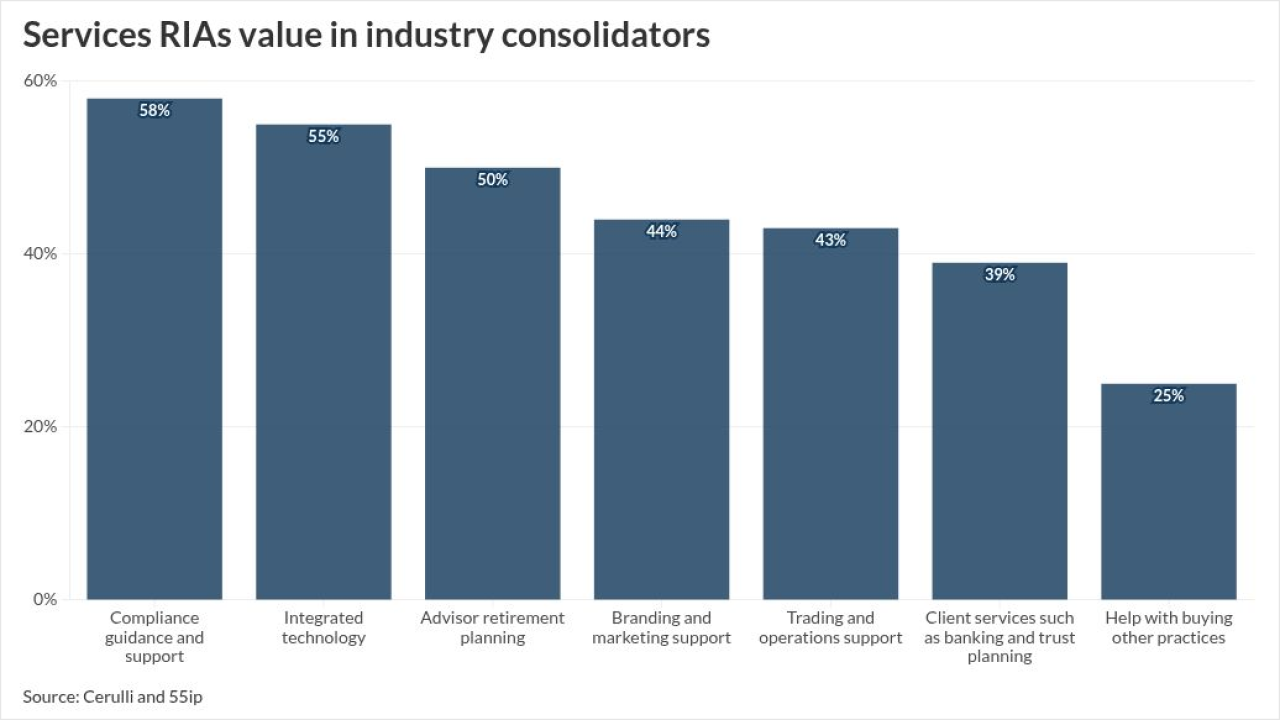When I think about extreme performance, I think about Washington Latin - a public charter school I helped found seven years ago in Washington, D.C. Both the school and its students have been what I call "hyper-performers" - in fact, it's the highest-ever-performing non-magnet school in Washington, as defined by graduation rates.
And its outstanding track record offers several lessons that advisors can use to improve their practices.
To put this in perspective: About 50% of public school students in Washington graduate from high school, and 80% of charter school kids graduate. In the first admitted class at Washington Latin, by contrast, 100% graduated - and 93% of them got into college, gaining more than $5 million in scholarships and financial aid.
At a recent fund-raiser, a woman asked me about the school's secret. My short answer was "the Socratic teaching method," which requires active participation from each student every day.
But what she really wanted to know was this: How does Washington Latin identify and develop a culture of hyper-performance? And, to take that question one step further, how could any school - or, really, any organization - do the same thing?
For advisors, there are a few key questions that will structure the way they think about such extreme performance.
*How do you define and identify hyper-performance?
*What can advisors learn from a bunch of school-age kids who have knocked it out of the park?
*And finally, how can you foster hyper-performance important in your own firm?
DEFINING THE EXTREME
I define and identify hyper-performance in three ways:
1. Performing at a physical or mental limit: Most of the time, a 6-year-old will not outperform an 18-year-old - but you can recognize and measure performance in any individual and compare it with their peer group. You can also gauge, either formally or informally, whether that individual is giving it their best effort.
2. Seeking competition: Whether involved in individual, group or team activities, hyper-performing individuals tend to engage others to perform at their physical and mental limits. (Think Michael Jordan or John Wooden in sports, or Mikhail Baryshnikov in ballet.) In many cases these engagements create new levels of performance, exceeding any of the individuals' previous efforts.
3. Improving constantly: Hyper-performers never stop improving. They use coaches, teachers, consultants and trainers; they continue to learn, create, evolve, adapt and invent new theories, techniques, processes, tools, technology and products. And as a result, they move to ever-higher levels of performance.
SCHOOL LESSONS
At Washington Latin, teachers and administrators promote hyper-performance by daily engagement and interaction. The head of school admitted to me that she thinks of it as a daily "battle" for achievement.
To foster across-the-board development at such a high level, she said, requires the following understanding:
*Engagement must continue every day.
*Not everyone can be a hyper-performer every day.
*Progress will occur at a different pace for every individual in a particular group.
*It takes daily encouragement and exceptional effort on the part of teachers and staff.
As a result, hyper-performance is happening in a diverse and otherwise unremarkable group of kids. The trick is to understand what lessons planners can take from these kids' experience.
FOSTERING PERFORMANCE
For advisors, the most critical question is "How do I foster hyper-performance in my own firm?"
Organizational scholar Peter Senge, in his book The Fifth Discipline, identified several critical disciplines necessary for the continued success of business organizations.
One factor, "team learning," is necessary to pass critical information and ideas from individuals to teams, then to the organization as a whole. A second factor, "personal mastery," centers on the individual's motivation to learn and become better.
In other words, hyper-performance relies on continuous learning and improvement.
At Washington Latin, the use of the Socratic method promotes these factors. (Most graduate business schools use its equivalent, the case method, to develop these disciplines.)
There is a huge body of literature on enhancing performance in organizations, but in distilling it down to what works in smaller firms, the bottom line is this: You must foster a culture of achievement. And you must act as a hyper-performer yourself.
This means engaging each and every person in the firm by giving them challenging and personally fulfilling work.
WHO'S RESPONSIBLE?
While fostering hyper-performance in your practice starts with managers, it ultimately involves everyone in your firm. Here are a few examples of what we're doing in our firm.
Rewards: One relatively unique reward we use is a "Savantbuck" (named for our firm, Savant Capital Management). These are dollar-denominated, non-negotiable paper certificates supervisors can bestow on anyone at any time for superior effort or performance above the call of duty. Awardees accumulate Savantbucks, ultimately redeeming them for things such as travel. Also, people who have accumulated Savantbucks can award them to others in appreciation. Other annual rewards are tied to team performance, such as staff bonuses for overall company growth and improved profitability.
Recognition: We encourage and promote increased visibility within and outside the firm - because we believe recognition reinforces the good habits that create hyper-performance. Internally, we recognize team members daily, via the company intranet, for personal and professional achievements.
Externally, in 2010 our total mentions in local/regional/national publications, as well as radio and TV outlets, totaled 144. In 2012, for the first 11 months, that number climbed to 240. That increase - almost 70% in just two years - is a result of exceptional efforts by many of the firm's professionals to increase their writing and blogging, to speak publicly more often and to respond to media interview requests.
Responsibility: One way to reward hyper-performance is to offer greater responsibility. Advisors in our firm get the opportunity to develop as much business as they want, the freedom to collaborate with as many other professionals in the firm as necessary, and the ability to build as big a client base as they choose to handle.
TEAM APPROACH
As you may have noticed, teamwork plays a key part in hyper-performance. At our firm, we emphasize team efforts in serving clients, and reward team results. And everyone knows success is not limited to a few, and is not a zero-sum game.
For advisors, hyper-performance isn't just about individual performance - it's about superior achievement by every member of an organization. It's about unlocking maximum human potential by creating the right environment for learning, fostering constructive feedback among participants and making it a priority to engage and hold accountable every member of the group.
Think about your organization. Are you hyper-performing, or merely hyper- ventilating? Consider raising your game, and see who follows.
Glenn G. Kautt, CFP, EA, AIFA, is a Financial Planning columnist and vice chairman of Rockford, Ill.-based Savant Capital Management.





